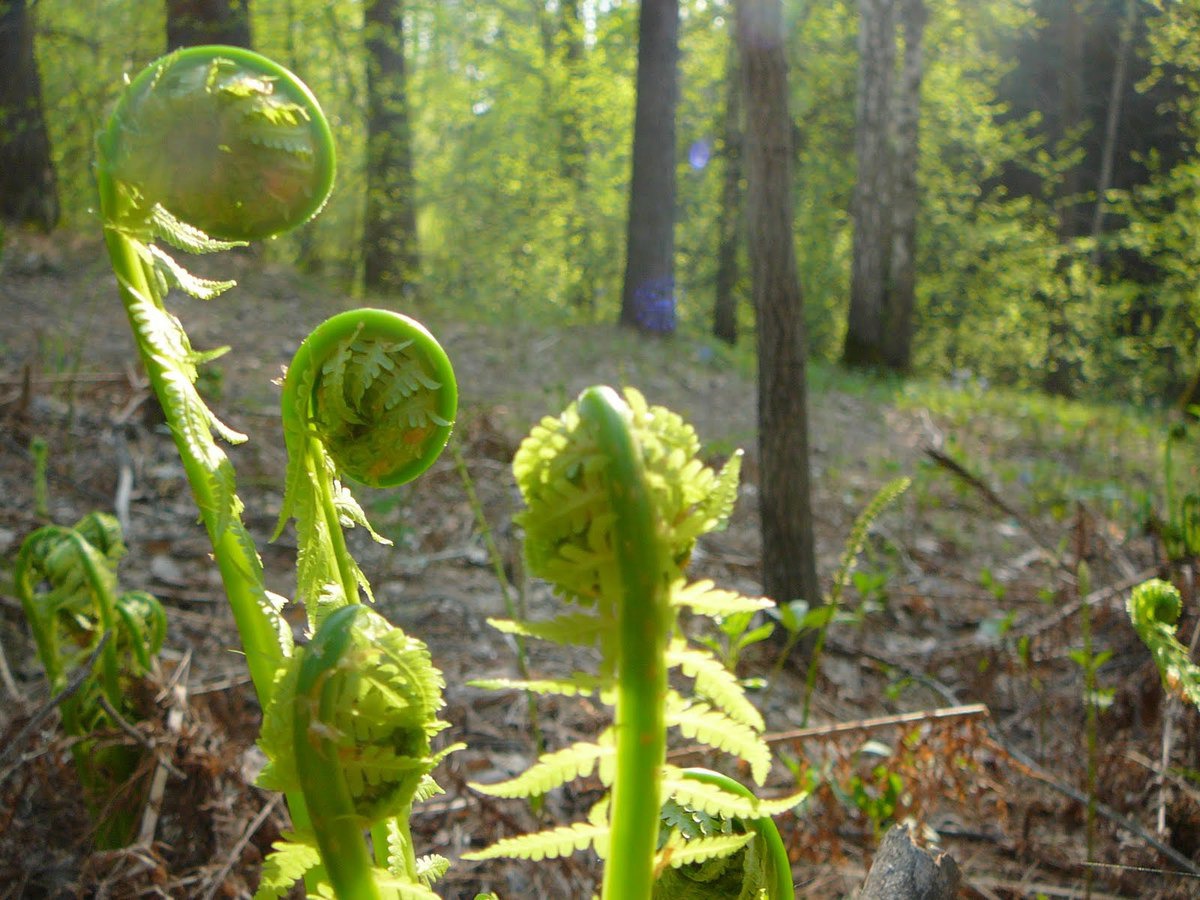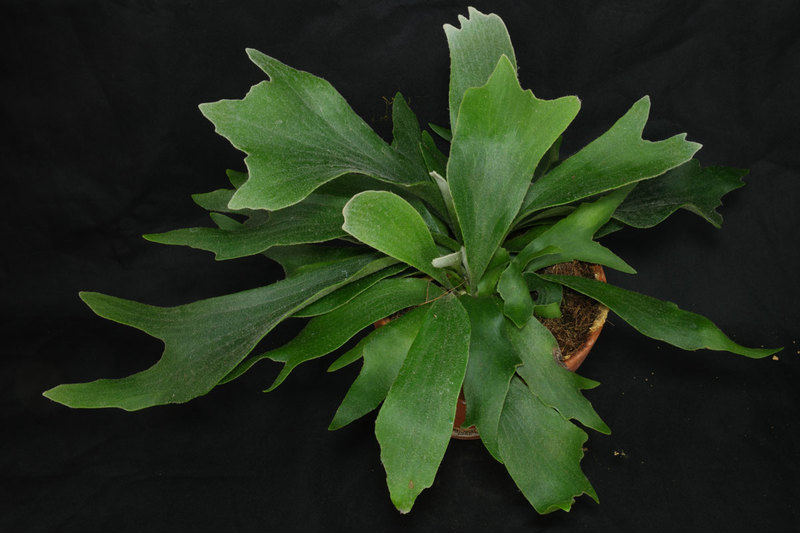The oldest plants, ferns, were grown in greenhouses as early as the Victorian era. And until now, these amazing openwork shrubs are very popular. Homes and apartments are decorated with home ferns. Plants of impressive size are planted in offices, hotels and various institutions.
Most of these plants are able to survive various natural disasters and survive in the most difficult conditions. Some of them are not difficult to grow at home. However, to fern pleased with his luxurious and healthy appearance, you need to familiarize yourself with some of the rules for his care.
Content
Description, varieties and photos of domestic ferns
All ferns are perennial terrestrial epiphytic plants. They have short rhizomes and pinnately dissected leaves. On the stems covered with leaves, they also form ground loops that quickly root when in contact with the ground... On the bottom of the leaves of the plant are sporangia.
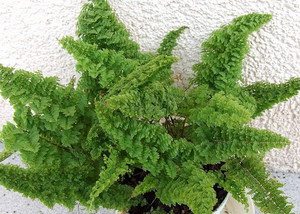 More than 10,000 species of aquatic, terrestrial, herbaceous and tree ferns grow in nature. Depending on the division, they can grow in forests, swamps or meadows. There are babies and giants among themwhose leaves are more than half a meter long. In hygrophilous plants, the leaves are delicate, strongly dissected and have a light green tint. Drought-resistant ferns are characterized by leathery leaves, sometimes with a waxy coating.
More than 10,000 species of aquatic, terrestrial, herbaceous and tree ferns grow in nature. Depending on the division, they can grow in forests, swamps or meadows. There are babies and giants among themwhose leaves are more than half a meter long. In hygrophilous plants, the leaves are delicate, strongly dissected and have a light green tint. Drought-resistant ferns are characterized by leathery leaves, sometimes with a waxy coating.
Fern Platyzerium - antlers on your windowsill: https://flowers.bigbadmole.com/en/komnatnye-rasteniya/platicerium-uhod-v-domashnih-usloviyah.html
Types of indoor ferns
Today bred many cultivated fern species suitable for cultivation at home. The most popular of them are:
- Nephrolepis is the most unpretentious and well-known type of house fern. It is distinguished by a spectacular rosette, which is formed by openwork leaves with spores on the inside. The length of each leaf reaches 45-50 cm.
- Davallia or hare's foot is distinguished by reddish shaggy rhizomes that hang along the edges of hanging pots. The exotic plant is covered with lush green leaves.
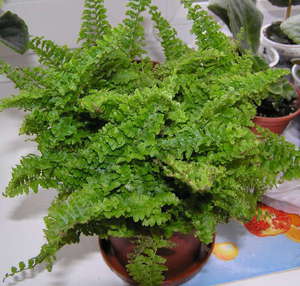 Platycerium is a plant whose flat leaves grow in different directions and are very similar to antlers. Its middle with brown leaves resembles a head of cabbage.
Platycerium is a plant whose flat leaves grow in different directions and are very similar to antlers. Its middle with brown leaves resembles a head of cabbage.- Asplenium or kostenets differs from other fern species in undivided leaves wavy along the edge. He doesn't like very much when his leaves are touched.
- Blehnum or Derbyanka is similar in structure to a palm tree. In an adult plant, the crown reaches one meter in diameter and consists of hard fronds.
- Disconia as a houseplant can only be grown at a young age. Over time, it grows into a tall tree, the height of which can reach 3–6 m.
- Polypodium or millipede is distinguished by deeply dissected leaves located on thin stems. The rhizome of the plant crawls and clings to the surface, and the bush itself is able to grow in the air.
How to care for a fern at home?
Active growth and beautiful appearance of the plant directly depends on the growing conditions and compliance with the rules for care.
Lighting and temperature control
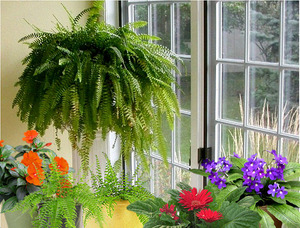 Indoor ferns need a well-lit place that is protected from direct sunlight. Many growers mistakenly believe that these plants are shade-tolerant. However, in the shade, the shrub will stop growing and may even die. Therefore, to keep the leaves large and healthyand, diffused but bright light is needed. It is best to place or hang the fern pot near the southwest window.
Indoor ferns need a well-lit place that is protected from direct sunlight. Many growers mistakenly believe that these plants are shade-tolerant. However, in the shade, the shrub will stop growing and may even die. Therefore, to keep the leaves large and healthyand, diffused but bright light is needed. It is best to place or hang the fern pot near the southwest window.
Often a plant that is completely different from them is considered a fern. Meet Asparagus:https://flowers.bigbadmole.com/en/komnatnye-rasteniya/vyraschivanie-asparagusa-v-domashnih-usloviyah-vidy-foto.html
Shrubs feel good in rooms with an air temperature of + 15- + 22 degrees. but some fern species belong to certain groupsfor which it is necessary to create specific conditions:
- For the pimpled polypodium and pellea, the air temperature in winter should be about +12 degrees.
- Asplenium, platycerium, nephrolepis and maidenhair are heat-loving plants, so the air temperature during their cultivation should not fall below +18 degrees.
It should be noted that all types of ferns like well-ventilated rooms, and do not tolerate cold air and drafts. In summer, plant pots can be placed in the garden or on the balcony, protected from direct sunlight.
Watering and air humidity
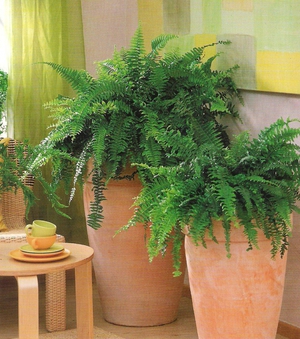 When caring for ferns at home, a certain watering regime is required. The plant needs a lot of water. It needs to be watered regularly.as soon as the topsoil dries a little. The optimal watering regime depends on the room temperature. In the hot season, the plant is watered several times a week.
When caring for ferns at home, a certain watering regime is required. The plant needs a lot of water. It needs to be watered regularly.as soon as the topsoil dries a little. The optimal watering regime depends on the room temperature. In the hot season, the plant is watered several times a week.
Prolonged overdrying of the soil is detrimental to ferns. You should be aware that a flower that has been in a dry earthen mixture for several days will not recover after watering.
Excess moisture for plant roots is also harmful. That is why ferns are planted in well-drained soils so that excess moisture immediately drains away. It is recommended to use soft water at room temperature for watering shrubs.... It is advisable that it be boiled or settled for several days.
Ferns are very fond of high humidity. They respond well to daily spraying. In hot weather and in rooms with batteries turned on, the plant must be sprayed several times a day or use a special humidifier. It is also recommended that shrubs take a shower periodically.
Why do the tips and edges of leaves in indoor plants turn yellow:https://flowers.bigbadmole.com/en/bolezni-rasteniy/pochemu-zhelteyut-konchiki-i-kraya-listev-u-komnatnyh-rasteniy.html
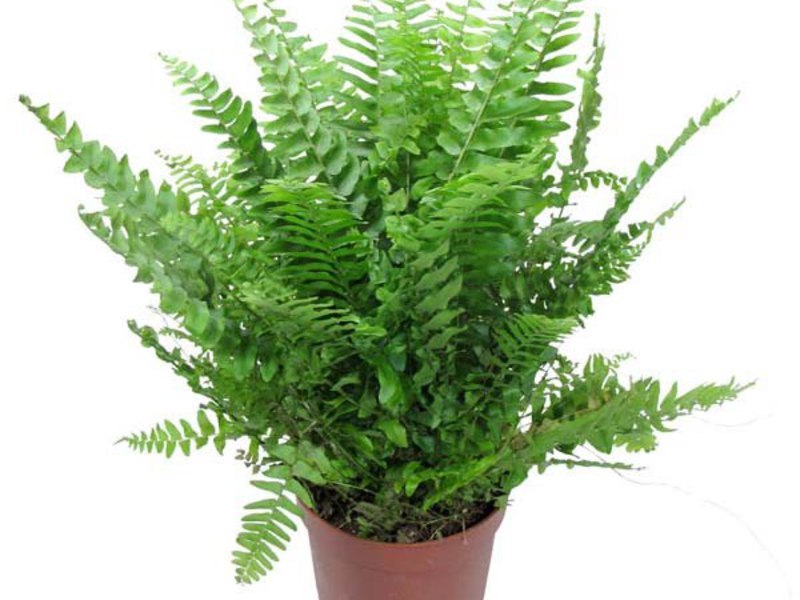
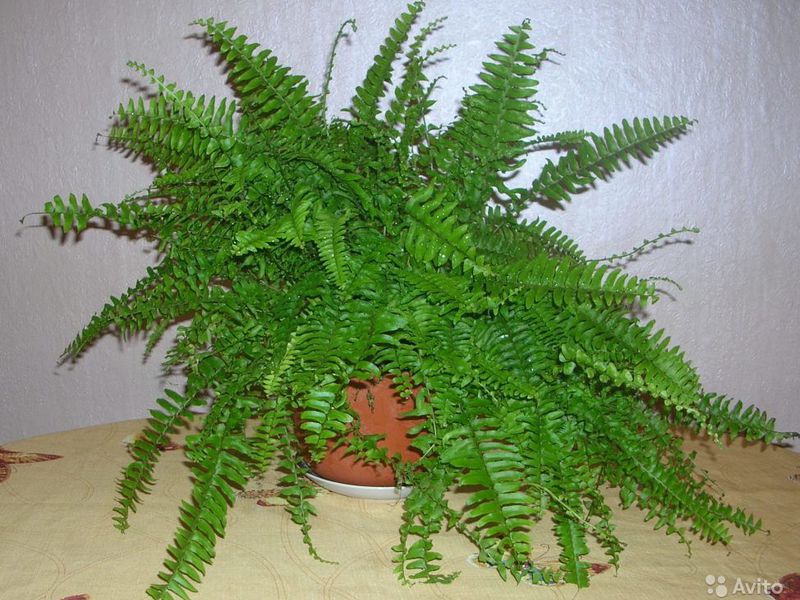
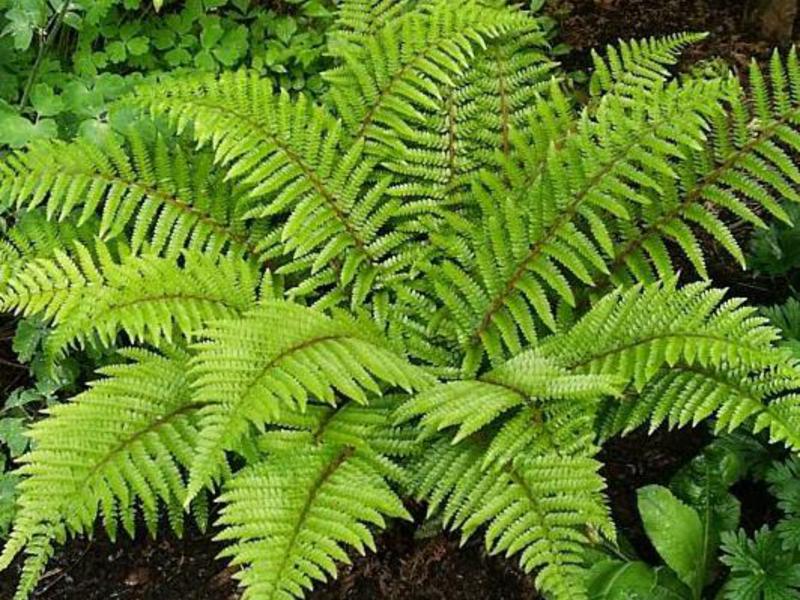
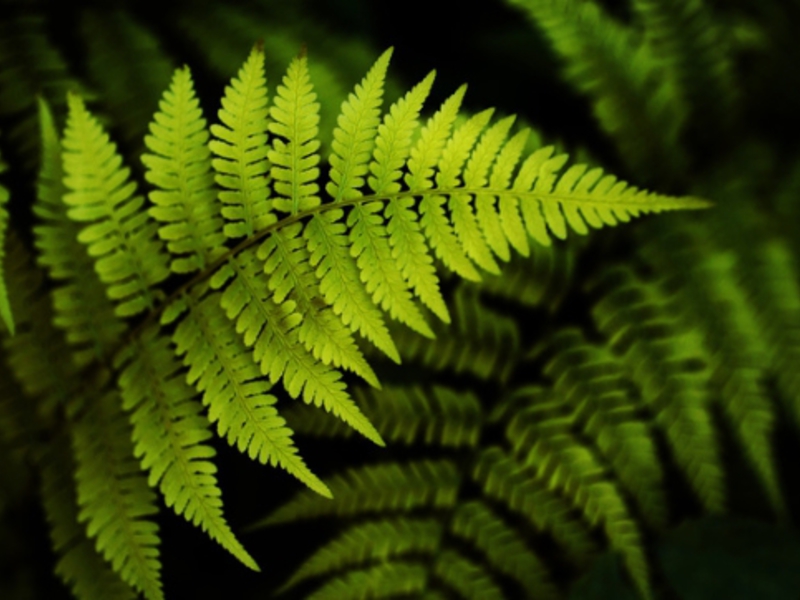
Top dressing
If, during active growth, the plant does not receive the necessary nutrients, the color of its leaves will first become very pale, then they will begin to turn yellow and dry... Therefore, once a week at home, the shrubs must be fed with special complex liquid fertilizers.
From late October to mid-February, the houseplant needs to triple the dormant period. If at this time the fern is kept in a cool room, then it will be necessary not only to stop feeding, but also to reduce the watering by half.
Fern transplant
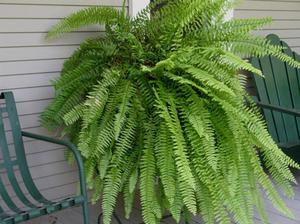 Indoor fern care includes transplanting young plants annually. Mature plants are transplanted only after the roots have completely filled the pot..
Indoor fern care includes transplanting young plants annually. Mature plants are transplanted only after the roots have completely filled the pot..
The difficulty lies in the fact that the shrubs tolerate the transplant procedure painfully and can recover after it within several months. therefore it is recommended to use the transshipment methodby replanting the plant from one pot to another without clearing the roots of the earth.
The best time for transplanting is spring. For a fern, you need to pick up a wide, low flowerpot and soil with acidity level from 5.0 to 6.6 pH... For self-preparation of the earthen mixture, you will need to mix:
- peat - 1 part;
- humus - 1 part;
- leafy ground - 1 part;
- bone meal - 1/5 part.
At the bottom of the pot, which should be 5 cm larger than the previous one, drainage is poured first, then moss spreads, and the substrate is poured. The plant is planted and its roots are covered with an earthen mixture so that no voids remain between them.
Immediately after planting and for another two weeks, the plant needs abundant watering.
Fern breeding
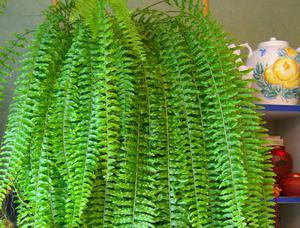 Plants reproduce in two ways:
Plants reproduce in two ways:
- disputes;
- dividing the bush.
In nature, ferns reproduce by spores, however, this is a very complex and painstaking process. At home, shrubs are best propagated when transplanting by dividing the bush.
It is recommended to separate young rosettes from an adult plant. This must be done with extreme caution.so as not to damage the roots as a result of the procedure. If possible, they need to save as much land as possible.
Delenki are planted in prepared small pots and put out in a warm room in a well-lit place. During the period of adaptation and rooting all the necessary conditions must be created for young plants... They require high humidity and abundant watering. The absence of this or that on the plant will have a detrimental effect.
Possible problems when caring for ferns
If the plant create the necessary conditions and care for him in compliance with all the rules, then there should be no problems with growing. However, in indoor conditions, shrubs can be affected by some pests:
 Aphids, thrips and scale insects can appear on the plant if the indoor air is dry. Therefore, when caring for a fern, it needs frequent spraying. If, nevertheless, insects appear, then the plant is treated with special chemical preparations.
Aphids, thrips and scale insects can appear on the plant if the indoor air is dry. Therefore, when caring for a fern, it needs frequent spraying. If, nevertheless, insects appear, then the plant is treated with special chemical preparations.- The nematoda infects shrubs that have been watered with cold water with a large amount of chlorine. The plants affected by this insect turn yellow and the leaves dry out. The bush must be urgently transplanted into fresh soil, having previously treated the plant with insecticides. But this procedure may not help the fern either.
When growing a fern in unsuitable conditions for it, it can react with yellowing and drying of the leaves... It is recommended to study the main causes of leaf drying:
- Watering with cold water.
- Watering with water with a high chlorine content.
- Drafts.
- Growing a plant in a too cold room.
- Exposure to direct sunlight.
- High temperature and too dry indoor air.
It should be noted that the brown dots located on the underside of the fern leaves are plant spores, which some growers mistake for pests.
Choosing a fern as a houseplant, you will not regret it. These wonderful shrubs live and grow well in a variety of conditions.... And with proper care, they look colorful and beautiful, decorating the room and reminding of the forest.

